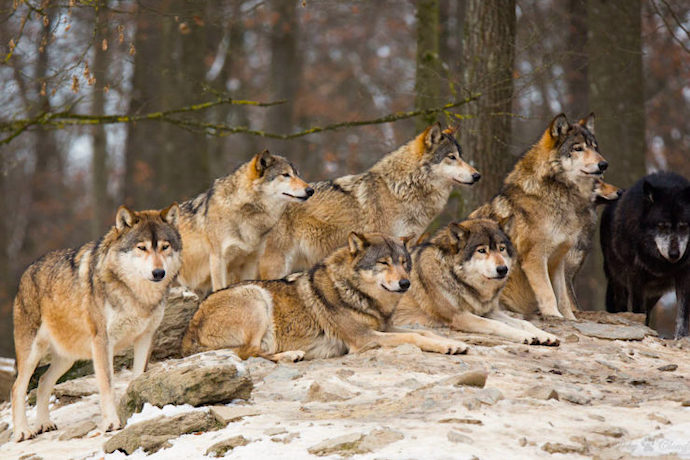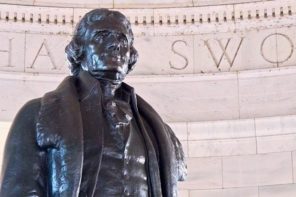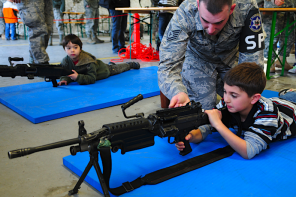Every time I hear the perpetrator of another mass shooting labeled a “lone wolf” my inner dog-lover rebels. Wolves, like dogs, are quintessentially pack animals! Just because these shooters turn up one at a time doesn’t mean they’re acting alone. They are, in fact, acting as part of a larger social reality. That social reality itself needs to be investigated and prosecuted, along with the often-pathetic individual shooters themselves. We need to move beyond the mythology of the “lone wolf” to root out the “wolf packs” behind these mass killings.
Thinking of these killers as “lone wolf” actors makes it easier to dismiss them as demented individuals, hapless victims of bad parenting, self-destructive misfits, or erratic evil doers. It also makes it easier to believe that “it can’t happen here,” or that it only happens to “other people.” Instead, we need to see these so-called “lone wolf” white supremacists for what they are—members of “wolf packs.” Seeing these shooters as members of a “wolf pack” reveals that we are up against more than meets the eye.
Seeing these shooters as members of a wolf pack would improve our ability to reckon with the danger they pose. Arrests and indictments may be another matter. Seeking to grasp the social reality of these “wolf-packs” is not intended to solve the First Amendment problems that were raised, for instance, in a recent Washington Post story. But researching how, and in what sense, social media are “social” would seem to be a priority for those seeking to protect the innocent against the exploitation of freedom of speech.
Unlike the free speech orator holding forth on their soap box in Times Square, those networked on social media enjoy a robust social existence, despite never even “meeting’ on FaceTime. They just don’t launch a random lone opinion or two, they publish and distribute information worldwide at the touch of a key. They exchange, interact and communicate with one another. What they publish can be encrypted for concealment and be archived for an eternity in the ether. Simply as data, they are a class of commodity traded via interstate and international commerce. As Facebook’s or Google’s monetizing of data shows, data are real. They have commercial and other value. The problem is that this commodity, data, like controlled substances, can travel the public information highways, too often for illegal purposes. Were information technology theorists to apply themselves to the task of bringing out the social reality of social media networks, it would make it easier to muster concerted, collective political and/or legal action against them.
Otherwise, these terrorizing atrocities just pass as the price paid for Second Amendment liberty. But seeing these shootings as social acts could change our whole approach. Collective action against white nationalists responsible for many of these recent shootings can be as successful as campaigns against the Mafia and organized crime have been. Nobody believes someone suited up in a “Chicago overcoat” is the work of a lone killer. Such acts, like most of the mass shootings both here—in El Paso, Orange County, Pittsburgh—or abroad—in New Zealand or Norway—point unambiguously to “packs” of white supremacists or other radical collectives. We need to begin to regard such acts of terror with a “social” eye.
In the past, in other contexts, Americans have shown themselves capable of seeing past the individual “lone wolf” to the collective “wolf pack.” In 1993, when the blind sheik’s gang tried to explode a truck loaded with explosives in the basement of the World Trade Center, he was written off, like today’s “lone wolf,” as a single malicious individual. September 11 made Americans recognize that neither Mohamed Atta nor that goofy shoe-bomber was a “lone wolf,” but that both were members of larger, though loosely organized, social bodies.
While our endemic xenophobia enabled our elected leaders to prosecute a disastrous war against a nation that played no role, the precedent of this collective response might better prepare us to understand how to mobilize action against the “wolf packs” lying in wait. We took the 9/11 attacks seriously because we believed them to be collective efforts, launched by organized and effective groups. What really stirred Americans into concerted collective action against al Qaeda was the conviction of how such a well-organized collective plot hid behind what otherwise looked like the deeds of an individual or two, or even a small group. That’s what we need now regarding the “wolf pack” of white supremacists.
But how can we even be sure the individual domestic terrorists in El Paso or Pittsburgh represent a “pack”? And how can we act while protecting our First Amendment right to free speech? Leaving aside spectacles of wolf-pack frenzy like Charlottesville’s torchlight parade, we don’t routinely see these wolf packs rallying at the local VFW hall. Yet, we know these shooters run with a “pack” of their own kind. We know who gives them aid and comfort.
Anyone who can surf the web knows white supremacists have a tendency to broadcast their views far and wide. As a social media community, the wolf packs may lack the tight organization and strategic command centers of organized crime or classic terrorist groups. But online, the wolf pack becomes real in the circulation and exchange of manifestos; the constant back and forth conversation reinforcing a sense of “us”; and the articulation of common language, where coded phrases like “high scores” mean lots and lots of killing. As virtual as these digital associations may be, they nonetheless effectively form real communities—common minds for the like-minded. Online sites must, thus, be taken seriously as the new venues where digital Klans gather, preparing for the next ride—even if they perform the actual ride alone.
Where critics need to focus instead is on sharpening the sense in which these online wolf packs can be said to be criminal communities like the Gambino or Lucchese crime families—communities who reveal their raison d’être in celebrating the latest shooting and/or their manifest intentions, as in the case of the El Paso shooter’s manifesto. Remember, The Godfather was just an innocent purveyor of olive oil.
As delicate a matter as it may be, we need a way to bring the white supremacist wolf-packs under something reflecting as much legislative imagination as the RICO laws did when they were first passed as a novel way to address organized crime. This statute was designed to enable prosecution of those who assisted in or enabled a crime, but who did not actually commit the crime in question. The degree of assistance or membership in a criminal enterprise seems to range widely, including ordering the crime to be done, financing its performance, harboring its perpetrator, sharing similar purposes and methods, and so on.
The door would seem at least to be open a crack to the use, or adaptation, of RICO principles against communities that enabled the commission of crimes, like the El Paso murders, by means of social media. Here, legal creativity would be required in order to make a convincing case that the “wolf pack” virtual online community—as represented, say, in “8Chan” postings and such—were sufficiently robust to reveal a pattern of activity that would invoke RICO, or a updated version designed to address this new context.
In dealing with the “wolf pack,” there’s no need to transgress constitutionally guaranteed rights any more than the pursuit of the Mafia has. We know how to ferret out carefully concealed crimes without destroying the values we’re trying to safeguard. The key to successfully bringing these so-called “lone wolves” under the law requires us to grasp the reality of the criminal activities of these virtual communities and to see them for what they are: “wolf packs.” As G. Robert Blakey, who wrote the RICO statute, told the Washington Post‘s Katie Mettler, using RICO to investigate white extremist groups without violating the First Amendment wouldn’t be “easy,” but there’s “no excuse” not to try.





